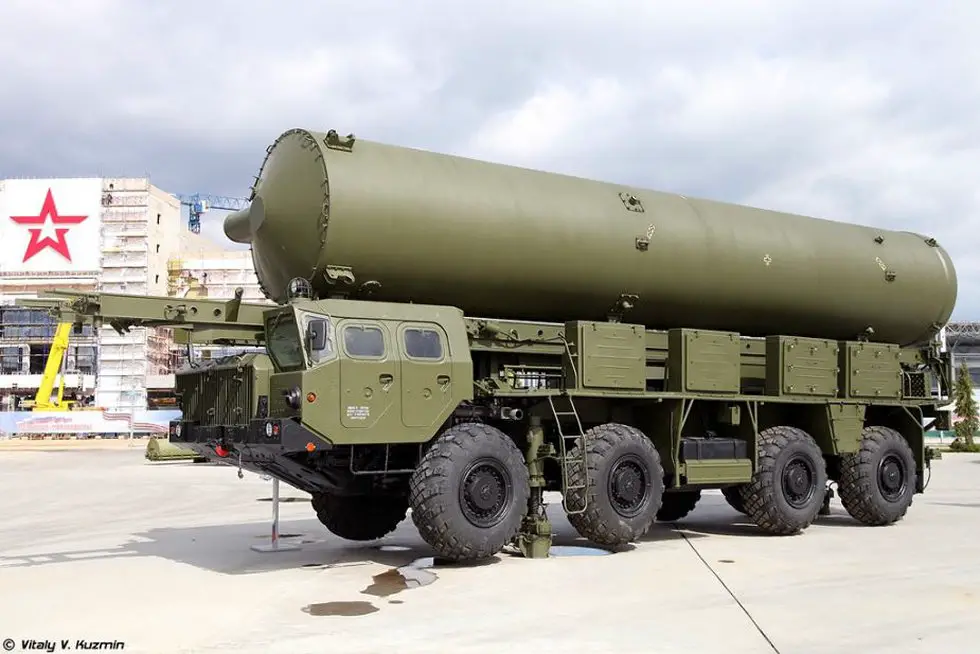Breaking news
Upgraded Russian anti-missile was tested in Kazakhstan.
An upgraded Russian antimissile was tested in Kazakhstan. The only operational ICBM defense facility in Russia is the A-135 Amur deployed in the Moscow region to defend the so-called Moscow administrative and industrial area. It became operational in 1995 and replaced the previous-generation A-35M.

The only operational ICBM defense facility in Russia is the A-135 Amur deployed in the Moscow region to defend the so-called Moscow administrative and industrial area (Picture source: Vitaly Kuzmin)
Amur comprises multifunctional all-round view radar Don-2N near Sofrino (range radar Don-2NP is in Sary-Shagan), command infrastructure and silo-based antimissiles of two types. The first echelon included exoatmospheric 51T6 interceptors with 32 nuclear warheads. Their mission was to minimize reentry vehicles before they enter the atmosphere. At present it is believed the missiles have been decommissioned. The second echelon comprised 68 high-speed interceptors 53T6 with nuclear warheads that attack targets in the atmosphere.
The 1972 ABM Treaty limited the number of antimissiles by one hundred. The treaty has been invalid since 2002, but the number of missiles did not increase.
Exoatmospheric interceptors are regularly tested at Sary-Shagan. Trials resumed in mid-2000s and nearly two dozen missiles have been fired. The latest tests engaged upgraded 53T6M missiles.
The design of a new version of Moscow missile defense - A-235 (codename Samolet-M) has been dragging since 1980s. It will have several antimissiles, including 53T6M, as well as new ones on mobile launchers (Nudol project which has been tested since 2014 is likely related to it). The system will be able to operate as an antisatellite weapon. A-35M could do it, but A-135 could not.
All available systems capable of attacking ballistic missiles (S-300V4, S-400) are rated as "theater of warfare missile defense." They can intercept medium-range (3000-3500 km) ballistic missiles. But they will produce a "bonding link" to bridge stationary A systems and long-range air defense (S-300V, S-400). It will be S-500 Prometheus.
It is a completely mobile weapon which includes long-range missiles from S-400 (40N6) and even more advanced missiles capable of intercepting targets at a speed of 7 km/h. It means they can hit ICBM at the final trajectory section.
The S-500 information provision can be interfaced with the targeting system of A-235 to produce a single distributed missile shield. Besides, S-500 antimissiles can be carried by prospective warships.
How does Russian missile defense differ from the US national shield? Mostly by space control. Russian weapons are deployed only on the national territory which creates a distributed and multi-level interception system at the final trajectory section.
The United States stakes on multi-layered architecture of mobile means, which includes (at least in future) interceptors for the final section, as well as medium and active sections (boost before separation of reentry vehicles). Geographically some components are deployed far away from the mainland of the country (Eastern Europe and Eastern Asia in future).
Besides, the United States initially built up missile defense firepower in a way to engage Standard SM-3 antimissiles from vertical Mk.41 launchers installed on all guided missile destroyers and cruisers, as well as some NATO warships. After some cheap and rapid adjustments, it is possible to reinforce attack weapons instead of deploying antimissiles in specialized launchers. At present SM-3 are incapable against ICBM but can fight intermediate missiles.
The United States can engage such an architecture due to supremacy at sea and a broad network of allies across the globe. Besides, there is periodic talk about the space echelon of orbital interceptors. The issue was raised yet in late 1980s. Tests of North Korean intercontinental-range missiles triggered a flow of articles, reports and statements about inevitable deployment of orbital interceptors.
Russia and the US have comparable capabilities to fight ICBM. The Americans currently have 44 GBI interceptors capable of hitting intercontinental missiles. They are deployed in Alaska and California to cover North Korean direction. Both Russia and the United States can repel a single (accidental) launch or a small group launch (several warheads on not very modern ICBM). But the shield cannot stop a massive missile strike, the Izvestia writes.


























